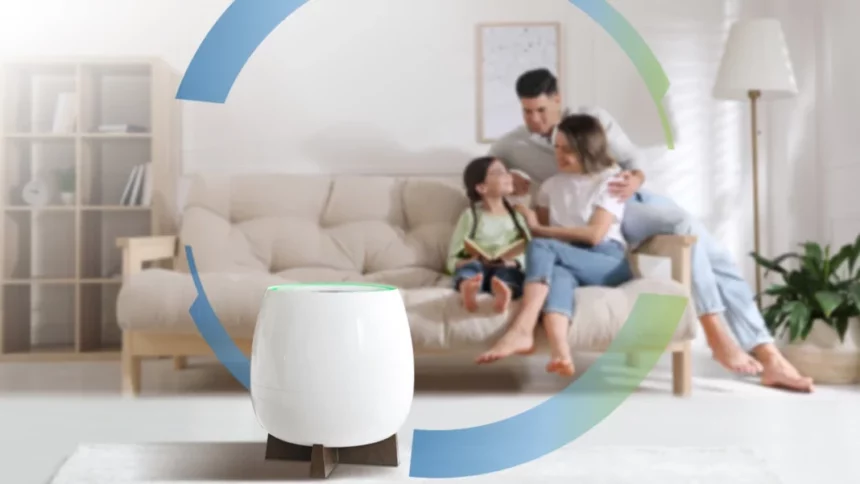Breathing is easy but knowing what we are breathing in is very important. Not every breath of air we breathe in is great country air!
VOCs? What’s that?
Volatile organic compounds (VOCs) are off-gassings from certain solids or liquids, many of which are found within our homes. Some of these VOCs may have short and long term adverse health effects. Take a look at the things you have at home and you will not be surprised to know that many of the furnishings and things we use at home emit VOCs.
Many of these VOCs are in higher than normal concentrations, especially inside our homes and offices. Breathing in these chemical off-gassings over a prolonged period of time may potentially result in adverse health issues.
SEE ALSO: Allergens – An Unseen Danger Lurking At Home
DID YOU KNOW?
- Cigarette Smoke? – Environmental Toxicity.
- There is first hand smoke, second hand smoke and now even third hand smoke!
- Cigarette smoke contains over 4,000 chemicals, including 43 known cancer-causing (carcinogenic) compounds and 400 other toxins. These include nicotine, tar, and carbon monoxide, as well as formaldehyde, ammonia, hydrogen cyanide, arsenic, and DDT.
- Mattress? – Bedroom Toxicity.
- A new mattress produces certain VOCs depending on what was used in the production of it. That’s the worst if you consider that we are our most passive while we are sleeping and are breathing in harmful toxins at the same time.
- We spend one third of our life in bed on a mattress.
- At least use a good nontoxic mattress cover to reduce the impact.
- Cosmetics? – Our Personal Care.
- When it comes to beauty products, the effects of the ingredients they contain can be more than just skin deep. The cosmetics industry uses thousands of synthetic chemicals in its products, in everything from lipstick and lotion to shampoo and shaving cream.
- Cleaning Detergent? – The Daily Homely Hazard.
- Cleaning the toilet, using dish and laundry detergent, mopping the floors and scrubbing the countertops are necessary chores, but using the wrong products can unnecessarily pollute the air.
- Many cleaning products release volatile organic compounds (VOCs), which becomes the unseen and unheard health hazard in your home daily. In fact, with the exception of getting vehicles off the road, using low- or no-VOC cleaning products can reduce more emissions than any other environmentally sound act.
Some health effects from exposure to VOCs:
- Eye, nose and throat irritations.
- Loss of coordination.
- Liver, kidney and central nervous system damage.
SEE ALSO: Creating a Healthy Indoor Air Environment For Your Home
Key signs or symptoms related to exposure to VOCs may also include memory impairment, visual disorders, respiratory tract irritation, and dizziness. Currently, not much is known about what health effects occur from the organics commonly found in homes. However, one should never take the risk of prolonged exposures.
Another important thing to note is that many organic compounds are carcinogenic or cancer causing. Example – Benzene is a known human carcinogen. The main indoor sources of this chemical are environmental tobacco smoke (whether it is first hand, second hand or third hand smoke), stored fuel and paints, automobile emissions in closed garages or carparks. Another chemical, perchloroethylene, which is widely used in dry cleaning is possibly cancer causing as well (tests have indicated that it caused cancer in animals). Recent studies have shown that people breathe low levels of this chemicals both in the homes where dry-cleaned goods are stored and from dry-cleaned clothing they wear. Taking measures to minimize your exposure to this chemical is most prudent.
What can we do to reduce VOCs in homes and offices?
- The most basic is, of course, to reduce the number of products that produce VOCs. This is often not possible.
- The second method, which is most recommended, is to allow more ventilation of air in to the building and exiting the building.
- Keep VOC causing products in proper storage areas that has adequate ventilation to the exterior of building.
- Use products that produce less VOCs. One of the better ways is to ensure that your wall paint is of the low VOC type.
- Finally, always use effective air purifiers as such equipment will help to reduce VOCs inside a room space.
DON’T MESS AROUND WITH VOCS!
Again, the point has to be stressed that it is often not possible for us to completely live our lives in a zero VOC zone or space. But we can take preventative measures. Keeping exposure to the minimum is the next best thing to do.
The menace of VOCs in our homes and offices needs to be looked into daily. We cannot prevent them from being there, but we can prevent them from harming us further each day. Get a good air purifier that will help you to reduce future health hazards to your body.

The QNET AirPure Air Purifier (ECARF Accreditated) and AirPure Humidifier are two effective products you should consider as part of your indoor air quality control, in your homes and business offices.
How can AirPure Air Purifier help reduce VOCs in the air?
With four distinctive purification stages, AirPure Air Purifier, available at your eStore, has an air purifying efficiency up to 99.97%. The new Hybrid Prefilter is now enhanced to a Dual-Layer Prefilter which significantly improves the performance of your AirPure Air Purifier in terms of better reductions of common volatile organic compounds (VOCs). They also eliminate airborne bacteria and trap dust pollutants.
Author’s Profile
Andrew Ong is an Air & Water Technologies Specialist. He is trained as an IAQ Assessor and have studied as a Certified Indoor Environmental Consultant. Andrew Ong has travelled extensively to many international regions as an IEQ trainer and presenter. He provides IEQ solution protocols to clients and is passionately involved in R&D for air and water technologies products and services. He is a member of the ISIAQ (International Society Of Indoor Air Quality And Climate) and the WQA (Water Quality Association).







Thankfulness to my father who shared with
me on the topic of this website, this blog is in fact
awesome.